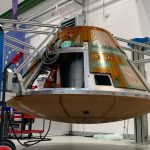The convergence of major technology vendors around a single protocol for AI agent communication is a significant shift in the AI industry, potentially ending the fragmentation that has limited widespread enterprise adoption of artificial intelligence (AI). As discussed by Google, incorporating its widely adopted Agent2Agent (a2a) protocol with the Linux Foundation has brought together Amazon Web Services (AWS), Cisco Systems, Microsoft, Salesforce, SAP, ServiceNow, and others. This move aims to create a foundational standard that facilitates the integration of AI agents across different platforms, eliminating the need for extensive custom integrations and reducing operational costs. However, the move raises important questions: How can enterprise AI solutions be deployed in a decentralized environment, ensuring AI agents can coordinate tasks and information between different vendors? And, will this convergence further drive the development of standardized AI communication protocols?
Technical Foundation Enables Cross-Platform Agent Communication
The a2a protocol forms the backbone of this convergence, enabling AI agents to communicate over a standardized communication layer. Utilizing JSON-RPC 2.0 and HTTP, the protocol provides a robust global communication framework. This layer not only facilitates secure data exchange but also allows AI agents to perform complex tasks without relying on human intervention, thus reducing the need for custom integrations. By abstracting away the complexities of vendor differences, a2a unifies the AI community, enabling collaboration across platforms.
The protocol’s architecture is designed to accommodate both synchronous request-response patterns and asynchronous workflows, making it highly flexible and suitable for enterprise environments. It supports over-the-air (O2A) initiatives, where AI agents can request updates or process data in real-time, while also allowing for coordinated @{ }agreements for more complex, multi-step processes. These capabilities are powered by server sent events, ensuring seamless communication between agents operating on diverse platforms.
Why agent discovery is the next big trend
Agent discovery occurs through "Agent Cards,"
Agent Cards, or digital business cards, are simple yet powerful software constructs that provide capability descriptions and connection information to compliant agents. When an agent encounters a task requiring specialized expertise, it can query available agents, review their capabilities, and establish secure communication channels without the need for human intervention. These cards not only simplify the process of discovering agents but also accelerate the adoption of multi-vendor solutions.
Security and trust are non-negotiable in this ecosystem. The a2a protocol ensures that only authorized agents can access specific capabilities, while providing provenance mechanisms to establish audit trails and secure compliance. This approach aligns with the growing importance of data governance and audit practices in the AI industry.
The Protocol Supports Bridging Different Platforms
synchronous request-response patterns
The a2a protocol’s synchronous nature is aligned with enterprise workflows where tasks may require human approval or extend across multiple business days. For example, a request from a team member may require a complex AI-driven decision, which a non-vendor agent would need to review fully before committing its output.
asynchronous workflows
However, the protocol also supports asynchronous workflows, allowing for workflow hops across multiple weeks. This flexibility ensures that AI agents can seamlessly collaborate with agents on distant platforms while maintaining audit trails.
The a2a protocol’s modular architecture makes it versatile for different enterprise scenarios. Whether delivering immediate updates or processing historical data, the protocol consistently delivers reliable and secure messaging, regardless of the underlying technology stack.
Authentication and Secure Communication
Data privacy and security are critical for enterprise AI deployments. The a2a protocol implements robust authentication mechanisms to ensure only authorized agents can access specific capabilities while maintaining audit trails. This level of security complements the protocol’s open-source model, enabling enterprises to build trust in their AI solutions.
Interoperability Across Platforms
The a2a protocol has already demonstrated its effectiveness in real-world scenarios, with AWS FactSights leveraging a2a to create AI agents for WebSphere Cloud Intelligence and Salesforce inspiring AI teams in different regions. This indicates that enterprise teams are adopting the protocol for practical adoption, which underscores its potential to disrupt traditional vendor landscape dynamics.
Cloud anarchists’ Journey to a2a
Amazon Web Services (AWS) claimed early success with its use of a2a to create tools that integrate Bedrock agents with its own a2a endpoints. This initiative demonstrates the protocol’s versatility and impacts the broader adoption of multi-vendor AI solutions.
Microsoft’s Integration
Microsoft’s recent announcements, such as Copilot Studio integration and Azure AI Foundry enhancements, further highlight the potential of the a2a protocol. Microsoft’s inclusion of a2a into its AI Foundry indicates avalability of standardized solutions for enterprise-level AI pipelines.
Salesforce’s Contribution
Salesforce’s Agent Card concept became integral to the a2a protocol’s capability discovery mechanism. By positioning agent interoperability at the heart of the standard, Salesforcesol introduced features that made agent integration a natural fit.
The Future of AI Ag genuity
The convergence of vendors around a2a is creating opportunities for enterprises to adopt multi-vendor solutions without navigating vendor lock-in. This shift toward a shared standard is not just about collaboration but about fostering a more open ecosystem that reduces dependency and increases efficiency.
Enterprise leaders must, however, manage the evolving requirements of their architecture while ensuring the security and compliance of their AI solutions. Vendors should also position themselves to leverage the converged ecosystem, offering tailored solutions that address specific enterprise challenges.
Strategic Implications for Technology Decision Makers
Vendor Neutrality and Policy Evolution
The Linux Foundation’s governance model promotes vendor neutrality, signaling that enterprises will prioritize convergence and collaboration rather than exclusive control. This approach positions technology evolveectors for greater adaptability to future AI trends.
Standardization and Ending Fragmentation
Standardization through a2a addresses a fundamental challenge in enterprise technology: the fragmentation of AI solutions. By creating a shared vocabulary, organizations can share knowledge, collaborate across platforms, and drive progress toward sustainable AI delivery.
The Road Ahead: Two Streams in a SingleProtocol
The convergence of vendors and the rise of the a2a protocol present two significant opportunities:
- Dual Streams of Innovation: Internal and external developers can contribute to the standard, fostering innovation across boundaries.
- Unified Architecture: A2a bridges vendor gaps, enabling enterprises to build, deploy, and monitor AI products more effectively.
Challenges and Opportunities
The move also brings its own set of challenges, such as ensuring secure data governance, building compliance frameworks, and supporting the use of AI agents in newly emerging environments. These challenges, however, are set for resolution, with standardization driving adoption and innovation.
In conclusion, the convergence of vendors around a2a represents a pivotal step toward a more robust and efficient AI ecosystem. By fostering interoperability, reducing dependency risks, and accelerating innovation, this move sets the stage for a future where AI agents adapt seamlessly across environments, without the need for vendor lock-in.



